
HOME
INTRO
SYMBOLS
ALMANAC
ECONOMY
GEOGRAPHY
STATE MAPS
PEOPLE
FORUM
NEWS
COOL SCHOOLS
STATE QUIZ
STATE LINKS
BOOK STORE
MARKETPLACE
GUESTBOOK
CONTACT US


You may double left-click on a word on this page to retrieve its definition. Tweet Follow
American Folk Dance of Idaho
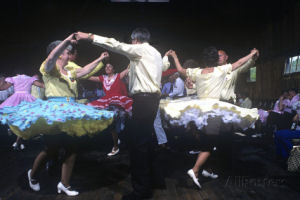
6 State American Folk Dance: Square Dance
Posters and Photographs
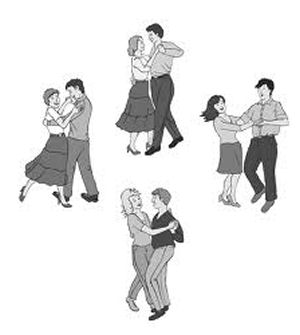
Idaho State American Folk Dance: Square Dance
Idaho, seemingly caught up in a mania perpetrated by modern western-type square dance organizations at the time, was the tenth state to designate the square dance as an official state dance. In 1989, it declared that "the folk dance, known as the square dance, is hereby designated as the American folk dance of Idaho." For more on "square dance fever" perpetrated by modern western-type square dance organizations, read this brief article.
In a process that reportedly took only five weeks, Idaho State Dance Campaign Chairmen Ted and Joy Koskella captured unanimous approval in both the Idaho Senate and House of Representatives to name the square dance the American folk dance of the State of Idaho.
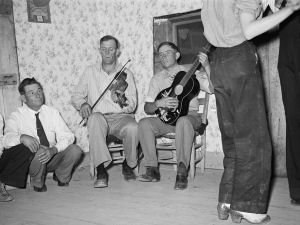
Traditional Square Dance Musicians
Of course, the Koskellas had help.
Idaho State Representative Kathleen Gurnsey was first to come on board. She agreed to introduce the measure that would honor the square dance. Things moved fast. On February 16, 1989, the Koskellas presented their case in front of the House State Affairs Committee.
The resolution was approved unanimously by the Committee and scheduled for presentation to the full Idaho House of Representatives.
Things were moving rapidly in the Legislature. On the outside, Idaho square dancers engaged in letter-writing campaigns and made plenty of phone calls to legislators. Their work helped to keep the resolution on the front burner at the capitol in Boise.
On February 22, House Concurrent Resolution No. 18 was introduced to the full House by Rep. Gurnsey. About fifty fully decked-out square dancers applauded from the gallery when the measure was approved unanimously for a second time: next stop, the Idaho State Senate.
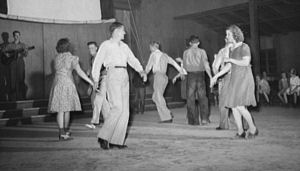
Saturday Night Square Dancing (1942)
On March 9, the Senate Commerce and Labor Committee took up the square dance resolution. Again, the Koskellas presented testimony and again Rep. Gurnsey was there by their side. Without much adieu, the Committee provided the Koskellas with a third unanimous vote and recommended that the full Senate ""Do pass--with enthusiasm." A favorable vote in the Senate was all that was needed to honor the square dance as Idaho's American folk dance.
On March 17 Idaho square dancers were rewarded by another unanimous vote as the Idaho Senate approved the resolution naming the square dance the American folk dance of Idaho.
By Concurrent Resolution, the square dance was designated "...as the American Folk Dance of Idaho." on March 17, 1989.
A Concurrent Resolution is approved by both bodies of the Idaho Legislature (House of Representatives and Senate), but is not entered into the Idaho Statutes as law and does not require the signature of the Governor. The text of the resolution follows:
IN THE HOUSE OF REPRESENTATIVES
HOUSE CONCURRENT RESOLUTION NO. 18
A CONCURRENT RESOLUTION DESIGNATING THE SQUARE DANCE AS THE AMERICAN FOLK DANCE OF IDAHO.
Be It Resolved by the Legislature of the State of Idaho:
WHEREAS, love of state and professions is enhanced by traditions that have become a part of our way of life and the customs of the American people; and
WHEREAS, we have distinctive and meaningful symbols of our ideals in our state's flag and in many cultural endeavors, but no official designation of a state folk dance; and
WHEREAS, the Square Dance, which was first associated with the American people and recorded in history since 1651, has consistently been the one dance traditionally recognized by the American people as a dignified and enjoyable expression of American folk dancing; and
WHEREAS, Square Dancing is the American folk dance which is called, cued, or prompted to the dancers, and includes squares, rounds, clogging, contra, line, and heritage dances; and
WHEREAS, official recognition of the Square Dance will enhance the cultural stature of Idaho both nationally and internationally; and
WHEREAS, it is fitting that the Square Dance be added to the array of symbols of our state character and pride:
NOW, THEREFORE, BE IT RESOLVED by the members of the First Regular Session of the Centennial Idaho Legislature, the House of Representatives and the Senate concurring therein, that the folk dance known as the SQUARE DANCE is hereby designated as the American folk dance of Idaho.
The square dance is a popular type of folk dance in the United States. This dance for four couples, or groups of four couples, is performed in a compact framework of a square, each couple forming a side. Traditionally accompanied by a fiddle, accordion, banjo and guitar, the couples perform a variety of movements prompted by the patter or singing calls (instruction) of a "caller". Cooperative movement is the hallmark of well-executed square dancing.
Square dancing is to be distinguished from related dances called contra or longways dance where couples stand double file in a line and from round dances where couples stand in a circle. The origin of the square dance can be traced to English derivation and to the stately French cotillion performed in square formation that was popular at the court of Louis the fifteenth later replace by the quadrille (another square dance).
The Idaho Secretary of State defines the American folk dance of Idaho in this way:
The 1989 legislature designated the square dance as the American Folk Dance of Idaho. Two of the most commonly cited ancestors to modern square dance are the English Morris dance and the French Quadrille. It is the Quadrille that most point to as the grand-daddy of our modern square dance. One of the earliest records of this type of dance in America is contained in the works of John Playford, a musician and dancing master. His book, ‘The English Dancing Master - Plaine and Easy Rules for the Dancing of Country Dances, with Tunes to Each Dance’ was published in seventeen editions between 1650 and 1728 and contained 918 dances. As the pioneers moved westward, many of the dances were lost or forgotten, but many were preserved, particularly in the southern Appalachians where the running set established itself as one of the deep taproots of western square dance. The running set even had a caller — America’s only unique contribution to the square dance.
("State Dance")
A brief description of the efforts to declare the square dance the national folk dance of the United States of America can be found here.
Idaho Law
The square dance was designated the American folk dance of Idaho by House Concurrent Resolution, requiring the approval of both the Idaho State House of Represenatives and the Idaho State Senate but not the signature of the Governor.
Sources...
"Idaho State Emblems." Idaho State Historical Society. Idaho State Historical Society, 1993. Web. 11 Feb. 2016.
Shearer, Benjamin F. and Barbara S. State Names, Seals, Flags and Symbols: A Historical Guide Third Edition, Revised and Expanded. Westport, Conn: Greenwood Press, 3 Sub edition, 2001.
"State Dance." Idaho Secretary of State. State of Idaho. Web. 11 Feb. 2016.
"The American Folk Dance of Idaho." American Square Dance May 1989: 98. Print.
Additional Information
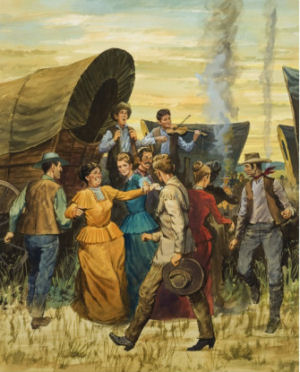
Idaho State American Folk Dance: Square Dance
Posters and Photographs
Square Dancing 101: Square dancing basic including positions, formations, moves, and a glossary.
Video Square Dance Lessons Online: Video Square Dance Lessons Online and on DVD from Cyberpoint Marketing, LLC.
A Brief History of Square and Round Dancing: by Herb Egender.
Square Dancing: The Historical Geography of an American Folk Custom: by Richard M. MacKinnon, Allan Hancock College, Santa Maria, California.
Square Dance History Project: Website devoted to the documenting the history of square dancing with historical documents and an emphasis on imagery as much as possible.
History and Heritage of Modern American Square Dancing: A summary of the essays by Dorothy Shaw, Bob Osgood and Kenny Reese.
The State Folk Dance Conspiracy: Fabricating a National Folk Dance: by Judy Mangin - Originally published in the Old-Time Herald, v.4(7) p.9-12, Spring 1995.
National Folk Dance Effort Moves Forward: We're On Our Way Now, So Let's Make a Lot of Noise!: United Square Dancers of America National Folk Dance Committee.
The Square Dance Legislation Collection: American Folklife Center 1984/024, Compiled by Michelle Forner, Library of Congress, Washington DC, December 1994
Official website: Idaho Federation Of Square & Round Dance Clubs Inc.
State dances: Complete list of official state dances from NETSTATE.COM
More symbols & emblems: Complete list of official Idaho state symbols from NETSTATE.COM.
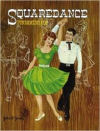
Square Dance Fundamentals
John W. Jones
Square Dance Fundamentals, John W. Jones. 208 pages. Publisher: BookSurge Publishing (February 5, 2007)
While there have been countless fun books written on square dancing, Squaredance Fundamentals was the first to cut to the chase. There is no interesting history of square dancing, there are no entertaining anecdotes, just the nuts and bolts of how to square dance. Revolutionary illustrations show the dancer’s point of view, not just the spectators’ viewpoint. Dancers can, without turning on their heads, glean from the detailed illustrations exactly what they need to be doing with their hands, feet, etc. Each dancer can effortlessly grasp the material and easily retain it. Renowned master caller/teacher, Marshall Flippo, assiduously assisted the author in establishing the very first guidelines for standardized “Basic Maneuvers” which would enable square dancers to dance gracefully with any group, anywhere.
No one shows you better how to execute the maneuvers than John W. Jones with his super simplified instructions and state-of-the-art illustrations in Squaredance Fundamentals - the gold standard for over 37 years.
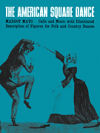
The American
Square Dance
Margot Mayo
The American Square Dance, by Margot Mayo. 116 pages. Publisher:Music Sales American (September 1, 2006)
You can have fun square dancing and you'll learn how to dance the figures and even learn how to call a square dance with Margot Mayo's classic manual, The American Square Dance. Here is the basic book for square dancers containing all of the essentials for many hours of enjoyment. An illustrated glossary of square dance terms shows all of the basic square dance figures – promenade, allemande left, do-si-do, etc. Complete instructions, calls and illustrated figures for 13 of the most popular American square dances appear, plus the music all ready for your pianist and fiddlers to play.
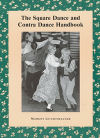
The Square Dance and
Contra Dance Handbook
Margot Gunzenhauser
The Square Dance and Contra Dance Handbook: Calls, Dance Movements, Music, Glossary, Bibliography, Discography, and Directories, by Margot Gunzenhauser. 320 pages. Publisher: McFarland & Company, Inc., Publishers; annotated edition edition (July 28, 2010)
This comprehensive guide to traditional style square and contra dancing, sometimes referred to as "country dancing," covers both music and style and gives background information on various dance types and calling techniques. Ninety dances, presented in chapters according to type (mixers, progressive circles, contra, Southern mountain style, squares and others), in a wide variety of formations are described with drawings and diagrams for many of the movements. A glossary of terms, a directory of addresses (organizations; vendors of books, recordings and audio equipment; and dance camps), and an annotated discography and bibliography are also provided.
A glossary of terms, a directory of addresses (organizations; vendors of books, recordings and audio equipment; and dance camps), and an annotated discography and bibliography are also provided.
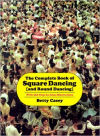
The Complete Book
of Square Dancing
(and Round Dancing)
Betty Casey
The Complete Book of Square Dancing (and Round Dancing), by Betty Casey. 208 pages. Publisher: University of North Texas Press (June 1, 2000)
This book includes: 50 basic movements, 35 advanced movements, variations, dances that are a part of the American heritage, Contra and Round Dances, polkas and reels, and calls, past and present.
“Square dancing is friendship set to music,” says author Betty Casey. Just take four couples, old or young, put ’em on a good floor, turn on the music, and you’re all set. Whether you’ve done it before or you’re just starting out, this book tells you everything you need to know—85 basic movements used all over the world, the spirited calls unique to square dancing, the costumes and equipment that are best, and music (from “Red River Valley” to “Mack the Knife”) that will set your feet in motion.
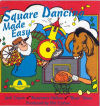
Square Dancing
Made Easy
Square Dancing Made Easy, Grade level: K-6. Audio CD (September 1, 1995), Number of Discs: 1, Label: Educational Activities, Inc.
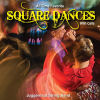
All Time Favorite
Square Dances
All Time Favorite Square Dances with Calls, Audio CD (September 8, 2009), Number of Discs: 1, Label: KADO, Run Time: 60 minutes.
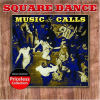
Square Dance Music
& Calls
Square Dance Music & Calls, Audio CD (November 21, 2006), Number of Discs: 1, Label: Collectables Records.
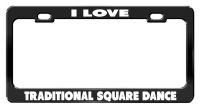
Black Metal
License Plate Frame
I LOVE TRADITIONAL SQUARE DANCE Black Metal Car Accessories License Plate Frame, This high quality license plate frame is made of metal, and it's the best quality item of its kind in the market. The lettering and art work are done by waterproof vinyl on the license plate frame and it will last for many years without any damage. It will not get brittle or cracked. It fits on all USA and Canada vehicles. It measures 12.5" X 6.5" and is durable to last under all weather conditions.
- Heavy Duty High Quality Metal License Plate Frame.
- Perfect Gift idea And Easy Installation.
- Rust, Corrode And Fade Free For Many Years.
- Fits all US and Canada License Plates.
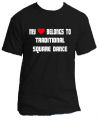
Traditional Square
Dance T-Shirt
MY HEART BELONGS TO TRADITIONAL SQUARE DANCE, This is a high quality pre-shrunk t-shirt that will not shrink or fade. It's comfortable, casual and loose fitting and will quickly become one of your favorites. It wears and looks well on anyone. It is cured with a heat treatment process to ensure lasting durability.
Brand New High quality preshrunk tee-shirt that will not shrink or fade. Double-needle stitched hemmed sleeves and bottom. Highest quality printing materials. 50% Cotton, 50% Polyester preshrunk blend. Soft, comfortable and weighs 6 oz.
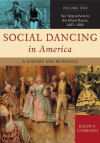
Social Dancing in America: A History and Reference (Volume One), by Ralph G. Giordano. 380 pages. Publisher: Greenwood (November 30, 2006)
Social Dancing in America examines the role of social dancing in daily life from the first settlements in 1607 through the birth of the nation in 1776 and into the beginning of the 21st century. This two-volume set provides a history of American social dances including the Virginia Reel, Square Dancing, the Lindy Hop, Rock 'n' Roll, the Twist, Disco, Breakdancing, and Hip-Hop. Social Dancing in America places social dancing in a historical, social, cultural, and political context.
Volume 1 explores the integral role that social dancing played in the lives of Americans from the first settlements in 1607 through the 19th century, often in the most unlikely of ways. For example, readers may be surprised to learn that George Washington was a well-known aficionado of social dancing, and that he incorporated the etiquette and manners of dances such as the Minuet as a means of diplomacy to secure European allies during the Revolutionary War. After his death, Americans continued to celebrate his birthday with a grand ball that included dancing.
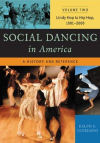
Social Dancing in America: A History and Reference (Volume Two), by Ralph G. Giordano. 428 pages. Publisher: Greenwood (November 30, 2006)
Volume 2 places social dance in a 20th-Century context, illustrating how social dancing itself paralled the social, economic, and cultural traditions of each era. For example, segregation and the Jim Crow mentality was cemented in place all over the United States, and for much of the century, dancing and dance halls were strictly segregated. Segregation forced a mass migration north, and with it came the transformation of Delta Blues music into an American original—Jazz. Jazz gave birth to the Charleston, and later evolved into Swing, which created the Lindy Hop. Later, with the advent of television, programming such as American Bandstand, Soul Train, Dance Fever, and MTV greatly influenced dance styles and modern trends such as Rock 'n' Roll, Freestyle, Disco, Breakdancing, and Hip-Hop.

